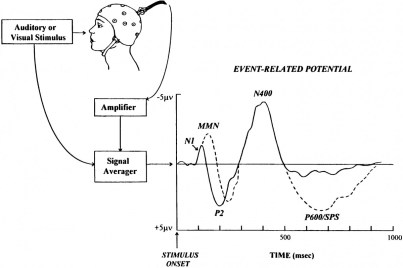 drinking but make it ~~patriotic~~
drinking but make it ~~patriotic~~
Walking around the city of Paris, it is hard to miss the fact that we are in a country submerged in a long, liquid history with wine and a current population dedicated to upholding this wine drinking culture. “For many individuals, drinking wine has become an identity-building process by which they become part of a new form of civil community constructed around a nostalgic view of a rural and authentic France” (Demossier, 2010, p. 13). Apparently, the French are quite a nostalgic bunch then, and at all times of the day. Whether it’s with a well-plated charcuterie board, a medium rare steak, or sans any food in front of them, I cannot recall a time when I did not walk through a Paris street without seeing anyone sitting outside at a café terrace without a glass of wine accompanying them.
a typical scene of Parisian merriment
As a nation with casual drinking during meals ingrained into the collective psyche, I was interested in seeing whether this difference in mentality would manifest in a difference in drinking habits – binge drinking in particular – among the young people of France and America. Binge drinking (BD) is typically defined as heavy alcohol use of four or five drinks over a short period of time. From 2009 to 2013, the prevalence of those partaking in BD among university students in France was about 30% in the period of a month (Tavolacci et al., 2016). During this same period of time, the percent of 18-22-year-olds in America binge drinking within a month wavered around 40% (White and Hingson, 2014). The underlying factors leading to the prominence of binge drinking is a bottle to be uncorked another time, but today I will be looking into the effects of binge drinking on cognitive function in young people.
We’ve all seen the short-term side effects of binge drinking – in fact I think I saw some of it walking around the Bastille area of Paris one day after dinner – but what about the unseen and long-term effects in the brain? As binge drinking is usually associated with those of college age whose primary occupation is often school, I wanted to see how much researchers know about what is happening to a brain and its function with frequent alcohol use.
In a 2009 study, 42 binge drinkers and 53 controls from between age 18-20 were tested. Scalp electrodes were used to measure event-related potentials (ERPs), which are measured brain responses that are a result of a specific sensory, cognitive, or motor event and a way to evaluate brain function. Subjects were asked to perform a visual working memory task, a task where visual information must be remembered and manipulated quickly when prompted, and then the components of their ERPs were compared. The results indicated that there was the presence of an electrophysiological difference between the binge drinker and the control group, and that higher levels of attentional efforts were required from the binge drinking group to differentiate between relevant and irrelevant information to effectively process working memory (Crego et al., 2009).
an example of the components of what an ERP may look like based on electrode measurements
Another study in 2011 tested 40 binge drinkers (13 females, 27 males) and 55 controls (24 females, 31 males) between the ages of 16 to 19. Researchers conducted neuropsychological testing, substance use interviews, and a spatial working memory (SWM) task, which requires retention and manipulation of visuospatial information, during functional magnetic resonance imaging (fMRI). Links between BD status and gender were found in brain regions spanning the bilateral frontal, anterior cingulate, temporal, and cerebellar cortices. In all regions, female binge drinkers showed less SWM activation than female controls; however, male binge drinkers actually showed greater activation of SWM which linked to better spatial performance (Squeglia et al., 2011). The results of this study seemed to indicate that females may be more vulnerable to the neurotoxic effects of binge drinking during adolescence, while male brains may be more resilient to the harmful effects of binge drinking (where does the male privilege end??).
 an example of a simple spatial working memory task
an example of a simple spatial working memory task
While ERPs and SWM are ways to assess brain function, I believe they can’t fully encompass cognitive performance, which synthesizes aspects of memory, attention, and reasoning. Overall, I believe the exact effects of binge drinking on the human adolescent brain will always be difficult to elucidate because of the many confounding factors that cannot be controlled for in correlational studies. However, this does not mean that this topic should be any less deserving of research because of the important implications the results can have for adolescents around the world and their brain health. For now, perhaps we should all follow the example of the Parisians and enjoy in moderation. Cheers for now!
Bibliography
Crego A, Rodriguez-HolguõÂn S, Parada M, Mota N, Corral M, Cadaveira F.(2009). Binge drinking affects attentional and visual working memory processing in young university students. Alcohol Clin Exp Res. 33(11):1870–9. 10.1111
Demossier, M. (2010). Wine Drinking Culture in France: A National Myth or a Modern Passion? (French and francophone studies) (p. 13). Retrieved from https://books.google.com.
Marie-Pierre Tavolacci, Eloïse Boerg, Laure Richard, Gilles Meyrignac, Pierre
Dechelotte, et al., (2016) Prevalence of binge drinking and associated behaviours among 3286 college students in France. BMC Public Health, BioMed Central, 16, pp.178.
Squeglia, L.M., Schweinsburg, A.D., Pulido, C. & Tapert, S.F. (2011) Adolescent Binge
Drinking Linked to Abnormal Spatial Working Memory Brain Activation: Differential Gender Effects. Alcoholism: Clinical and Experimental Research, 35, 1831-1841.
White, A. & Hingson, R. (2014) The burden of alcohol use: excessive alcohol consumption and related consequences among college students. Alcohol Res, 35, 201-218.
Image 1: from Demossier (2010) p. 10
Image 2: http://www.wikileaks.info/lifestyle/nightlife-in-paris/
Image 3: http://faculty.washington.edu/losterho/erp_tutorial.htm
Image 4: https://www.researchgate.net/publication/263156210_Nicotine_Impairs_Spatial_Working_Memory_while_Leaving_Spatial_Attention_Intact__Time_course_and_disruption/figures?lo=1&utm_source=google&utm_medium=organic





